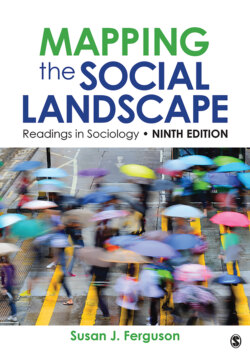Читать книгу Mapping the Social Landscape - Группа авторов - Страница 114
Conclusion
ОглавлениеThrough extensive observation, this study has captured the richness of children’s racial and ethnic experiences. The racial nature of children’s interactions becomes fully apparent only when their interactions are viewed over time and in context. Close scrutiny of children’s lives reveals that they are as intricate and convoluted as those of adults.
Blumer (1969:138) suggests that any sociological variable is, on examination, “an intricate and inner-moving complex.” Dunn (1993) notes that children’s relationships are complex and multidimensional, even within their own families…. By exploring the use of racial concepts in the child’s natural world, instead of trying to remove the child or the concepts from that world, we glean a more complete picture of how children view and manipulate racial and ethnic concepts and understandings.
For most children, racial and ethnic issues arise forcefully within the context of their interaction with others. Most of the children that we observed had little or no experience with people from other racial or ethnic groups outside of the center. For these very young children, who are having their first extensive social experiences outside the family, racial and ethnic differences became powerful identifiers of self and other. Whether this is also true for children who do not experience such a diverse range of exposure to racial and ethnic concepts is beyond the scope of this project. However, over the 11 months we observed dozens of slowly evolving transformations in these children’s racial and ethnic explorations and understandings. For many children, racial and ethnic awareness increased. Some, like Taleshia, regularly explored racial identities by comparing their skin color with that of others. Others, like Renee, faced crises over identity. For still others, racial and/or ethnic matters arose intermittently, but these matters did not seem to be central to the children’s explorations. Children varied in how often they expressed or indicated racial or ethnic understandings, but we were unable to observe each child constantly and cannot make a more detailed judgment on this issue.
To fully understand the importance of children’s racial and/or ethnic understandings, the nuanced complexity and interconnected nature of their thinking and behavior must be accepted and recognized. Measures of racial and ethnic awareness should consider not only children’s cognitive abilities but also the relationships that children develop in social situations….
Regarding the racial and ethnic hierarchy, young children understand that in U.S. society higher status is awarded to White people. Many understand that simply by virtue of their skin color, Whites are accorded more power, control, and prestige. Very young children carry out interactions in which race is salient. Racial knowledge is situational, and children can interact in a race-based or race-neutral manner, according to their evaluations of appropriateness. In children’s worlds race emerges early as a tool for social interaction and quickly becomes a complex and fluid component of everyday interaction.
The behaviors of the children in this preschool setting are likely to be repeated in other diverse settings. The traditional literature accepts that children display prejudice by the time they arrive at school, but offers no explanation about the acquisition of this prejudice beyond it being an imitation of parental behavior. We expect continuity of children’s racial and ethnic categories across settings, for children reveal a readiness to use their knowledge of race and ethnicity.
The observed episodes underscore problems in traditional theories of child development. When children fail cognitive tasks framed in terms of principles such as conservation and reciprocity, researchers often conclude that children lack the cognitive capability to understand race. However, surveys and observations of children in natural settings demonstrate that three-year-old children have constant, well-defined, and negative biases toward racial and ethnic others (Ramsey 1987). Rather than insisting that young children do not understand racial or ethnic ideas because they do not reproduce these concepts on adult-centered cognitive tests, researchers should determine the extent to which racial and ethnic concepts—as used in daily interaction—are salient definers of children’s social reality. Research on young children’s use of racial and gender concepts demonstrates that the more carefully a research design explores the real life of children, the more likely that research can answer questions about the nature of race and ethnicity in children’s everyday lives.
